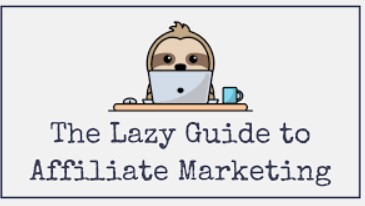Investing for Financial Independence and Retiring Early – Amon and Christina
Original price was: $120.00.$31.00Current price is: $31.00.
Investing for Financial Independence and Retiring Early – Amon and Christina Download. This course consists of more than four hours of video instruction, m…
Salepage link: At HERE. Archive:
Your Outcome
This course consists of more than four hours of video instruction, more than thirty resources, and a 19-page downloadable pdf investment plan for you to fill out and create based on the information you learn from the course. At the end of the course, we put everything together so that you can take action and invest.
About this course
This course consists of more than four hours of video instruction, more than thirty resources, and a 19-page downloadable pdf investment plan for you to fill out and create based on the information you learn from the course.
The video instruction is broken into twenty-one modules. Each module focuses on different investing topics, with the modules presented in sequential order.
We begin the course by discussing the steps you should take before you begin investing. We also discuss how to calculate your FIRE number and how that number relates to your overall investment portfolio and your withdrawal strategy during retirement. We then share stock market history information, historical market perspectives, and the mentality behind investing.
We go over the different types of investment accounts that may be available to you (including tax-advantaged and non-tax advantaged accounts) and we discuss the various types of fees associated with different types of investments. We discuss the key characteristics to look for when picking a brokerage company and we walk you through how to open a brokerage account, how to fund the account, and how to set the account up for automatic investments.
We discuss how to structure your order of investing and the different types of investments that you can add to your portfolio (including index funds, ETFs, REITs, individual stocks, and bonds). We discuss the key factors you need to consider when deciding on your asset allocation. We walk you through how to research different types of investments and what to look for when you’re investing in different assets, such as index funds, ETFs, REITs, and individual stocks.
We discuss whether you should lump sum your money into your investments or whether you should dollar cost averaging. We also discuss how to rebalance your portfolio, common investing mistakes to avoid, and how to invest during a recession and bear markets.
At the end of the course, we put everything together so that you can take action and invest.
Disclaimer
The content in this course are for educational purposes only and merely cite Amon and Christina own personal opinions. In order to make the best financial decision that suits your own needs, you must conduct your own research and seek the advice of a licensed financial advisor if necessary. Know that all investments involve some form of risk and there is no guarantee that: 1) you will be successful in making, saving, or investing money; 2) you won’t experience any loss when investing; or 3) that once you reach your FIRE number, your money will last forever during your retirement. Always remember to make smart decisions and do your own research!
Course Curriculum
Module 1 – Introduction & Overview
- Welcome! (4:16)
- Download your Stock Market Investing Plan for FIRE and your course!
- Module 1 Assignment: Section I of Your Investment Plan
Module 2: Summary Notes
- Module 2 – Steps to Take Before You Begin Investing
- Establishing an Emergency Fund (3:25)
- Pay off High Interest Debt (2:45)
Module 3 – Starting With a Goal & Achieving FIRE
- Calculating Your FIRE Number (4:14)
- The Trinity Study (6:57)
- Module 3: Summary Notes
- Module 3: Assignment #1 ( With a Goal)
Module 4 – Stock Market History (Good Investors Know their History)
- How it All Began (3:05)
- Crash of 1929 (Black Tuesday) (1:24)
- Crash of 1973-74 (Oil Crisis Crash) (0:59)
- Crash of 1987 (Black Monday) (1:15)
- Crash of 2000 (Dot-com Bubble) (2:22)
- Crash of 2008 (Great Recession) (1:16)
- Crash of 2020 (Coronavirus Crash) (4:05)
- Module 4: Summary Notes
Module 5 – Investing Mentality
- Controlling Your Emotions (4:19)
- How to Behave During a Crash (4:49)
- Module 5 Summary Notes
- Module 5: Assignment #1 (Investing Assessment)
Module 6 – Overview of Investment Accounts
- Two Types of Accounts: Tax Advantage & Non-Tax Advantage (2:08)
- Tax Advantaged Accounts – 401(k) (4:28)
- Tax Advantaged Accounts – Solo 401(k) (2:13)
- Tax Advantaged Accounts – 457 Plan (1:36)
- Tax Advantaged Accounts – Traditional IRA (2:27)
- Tax Advantaged Accounts – 403(b) (1:28)
- Tax Advantaged Accounts – Roth IRA (2:35)
- Tax Advantaged Accounts – Self-Directed IRA (1:40)
- Tax Advantaged Accounts – Health Savings Account (HSA) (4:41)
- Tax Advantaged Accounts – 529 (2:52)
- Non-Tax Advantaged Accounts – Ordinary brokerage account (5:04)
- Module 6: Summary Notes
- Module 6: Additional Resources
Module 7 – Types of Investment Fees
- Brokerage Fees (1:48)
- Transaction Fees (0:54)
- Expense Ratios (1:03)
- Fronted-End Load Fees (1:13)
- Back-End Load Fees (0:55)
- Management Fees (0:51)
- Annual Fees (0:40)
- Impact of Fees (4:44)
- Avoiding or Reducing Fees (Tip 1) (1:27)
- Avoiding or Reducing Fees (Tip 2) (1:29)
- Avoiding or Reducing Fees (Tip 3) (1:11)
- Avoiding or Reducing Fees (Tip 4) (1:41)
- Module 7: Summary Notes
Module 8 – Picking a Brokerage Company
- Evaluating the Brokers Security (2:37)
- Insurance – What to Look For? (1:17)
- Consider the Brokerages Fraud Policies (0:47)
- Checking for Fees (1:21)
- Assessing Customer Service (1:14)
- Platform Interface (Website and App) (1:03)
- Types of Accounts Offered (1:23)
- Customer Reviews (1:20)
- Module 8: Summary Notes
Module 9 – Opening A Brokerage Account
- Step-by-Step Instructions (4:54)
- Module 9: Summary Notes
Module 10 – Funding Your Brokerage Account
- Options for Funding Your Account (2:41)
- Module 10: Summary Notes
Module 11 – Automate Investments
- Automating – Benefit 1 (1:51)
- Automating – Benefit 2 (2:19)
- Automating – Benefit 3 (1:36)
- Automating – Benefit 4 (2:24)
- Setting Up Automated Investments (3:32)
- Module 11: Summary Notes
Module 12 – Order of Investing
- Why Order of Investing Matters (2:18)
- Step 1 (2:08)
- Step 2 (1:29)
- Step 3(1:29)
- Step 4 (1:17)
- Step 5 (1:49)
- Step 6 (1:39)
- Step 7 (1:16)
- Bonus Step for Early Retirees (2:10)
- Module: 12 Summary Notes
- Module 12: Assignment #1 (Your Order of Investing)
- Module 12: Additional Resources (How We Invested for FIRE)
Module 13 – Types of Investments
- Actively Managed Mutual Funds (2:01)
- Index Funds(1:08)
- Deciding Between Mutual Funds & Index Funds (2:03)
- Mutual Funds vs. Index Funds – Goals & Fees (2:08)
- Mutual Funds vs. Index Funds – Comparing Performance (1:38)
- Index Fund Preference (2:20)
- Exchange Traded Funds (1:18)
- Comparison – ETFs and Index Funds (1:27)
- Why People Choose ETFs Over Index Funds – Reason #1 (1:00)
- Why People Choose ETFs Over Index Funds – Reason #2 (1:09)
- Why People Choose ETFs Over Index Funds – Reason #3 (1:07)
- Why People Choose Index Funds Over ETFs – Reason #1 (2:42)
- Why People Choose Index Funds Over ETFs – Reason #2 (0:57)
- REITs (2:25)
- Individual Stocks (3:21)
- Bonds (2:25)
- Module 13 Summary Notes
Module 14 – Asset Allocation & Optimal Returns
- What Is Asset Allocation (1:46)
- Asset Allocation and Time Horizon (1:22)
- Aggressive vs Reckless Investing (1:41)
- Role of Bonds (2:14)
- Stock vs Bond Allocation (2:08)
- Problem With the Rule of Thumb (1:35)
- Our Thoughts When Developing Our Portfolio Allocation (1:41)
- Asset Allocation and Revisiting the Trinity Study (3:04)
- See Inside Our Portfolio – Stocks Bonds and Emergency Funds (2:21)
- See Inside Our Portfolio – Creating Our Core Investment (1:23)
- See Inside Our Portfolio – Supporting Our Core Investment With ETFs (2:28)
- See Inside Our Portfolio – Supporting Our Core Investment with REITs (0:56)
- See Inside Our Portfolio – Supporting Our Core Investment With Individual Stocks (1:35)
- Module 14: Summary Notes
- Module 14: Assignment #1 (Your Targeted Asset Allocation)
- Module 14: Additional Resources
Module 15 – Researching Investments
- Researching Investments in General (1:53)
- Researching Index Funds (2:44)
- Comparing Index Funds (2:19)
- Researching and Comparing ETFs (1:50)
- Researching and Comparing REITs (1:12)
- Individual Stocks A Word of Warning (1:08)
- Researching and Picking Stocks – Factor 1 (1:18)
- Researching and Picking Stocks – Factor 2 (1:06)
- Researching and Picking Stocks – Factor 3 (0:52)
- Researching and Picking Stocks – Factor 4 (0:52)
- Researching and Picking Stocks – Factor 5 (0:45)
- Researching and Picking Stocks – Factor 6 (0:46)
- Researching and Picking Stocks – Factor 7 (1:27)
- Module 15: Summary Notes
- Module 15: Assignment #1 (Your Investments)
Module 16 – Lump Sum Investing v. Dollar Cost Averaging
- An Identified Lump Sum (2:03)
- Vanguard Study and Results (1:55)
- The Mindset Role (1:30)
- Taking Into Account the Fear of Investing (1:35)
- The Ultimate Question to Ask Yourself (0:56)
- Module 16: Summary Notes
- Module 16: Additional Resources
Module 17 – Rebalancing
- Strategy of Rebalancing (1:56)
- Sample Portfolio to Rebalance (1:20)
- Rebalancing Strategy #1 (1:23)
- Rebalancing to Reduce Risk (2:13)
- Rebalancing to Increase Returns (1:32)
- Rebalancing Strategy #2 (1:22)
- Rebalancing vs. Timing the Market (1:55)
- Rebalancing Frequency Option #1 (0:49)
- Rebalancing Frequency Option #2 (1:38)
- Module 17: Summary Notes
- Module 17: Assignment #1 (Rebalancing Strategy)
Module 18 – Investing Mistakes to Avoid
- Eight Mistakes – Your Guiding Light (1:17)
- Mistake #1 (1:15)
- Mistake #2 (1:58)
- Mistake #3 (0:47)
- Mistake 4# (1:38)
- Mistake #5 (0:59)
- Mistake #6 (2:01)
- Mistake #7 (1:07)
- Mistake #8 (1:34)
- Module 18: Summary Notes
- Module 18: Assignment #1 (Note to Self – Investment Mistakes to Avoid)
Module 19 – Dealing With Recessions and Bear Markets
- Tip 1 (2:02)
- Tip 2 (1:01)
- Tip 3 (1:04)
- Tip 4 (1:06)
- Module 19: Summary Notes
- Module 19: Assignment #1 (Your Plan for Dealing with Crashes)
Module 20 – Putting it All Together
- Putting It All Together (2:26)
- Module 20 Summary Notes
Module 21 – Continue Education
- Continuing Education (1:54)
- Module 21: Summary Notes
- Module 21: Assignment #1 (Other Considerations)
Here's an overview of the prominent keywords and a list of famous authors:
Business and Sales: Explore business strategies, sales skills, entrepreneurship, and brand-building from authors like Joe Wicks, Jillian Michaels, and Tony Horton.
Sports and Fitness: Enhance athleticism, improve health and fitness with guidance from experts like Shaun T, Kayla Itsines, and Yoga with Adriene.
Personal Development: Develop communication skills, time management, creative thinking, and enhance self-awareness from authors like Gretchen Rubin, Simon Sinek, and Marie Kondo.
Technology and Coding: Learn about artificial intelligence, data analytics, programming, and blockchain technology from thought leaders like Neil deGrasse Tyson, Amy Cuddy, and Malcolm Gladwell.
Lifestyle and Wellness: Discover courses on holistic health, yoga, and healthy living from authors like Elizabeth Gilbert, Bill Nye, and Tracy Anderson.
Art and Creativity: Explore the world of art, creativity, and painting with guidance from renowned artists like Bob Ross and others.
All the courses on WSOlib are led by top authors and experts in their respective fields. Rest assured that the knowledge and skills you acquire are reliable and highly applicable.
Specification: Investing for Financial Independence and Retiring Early – Amon and Christina
|
User Reviews
Only logged in customers who have purchased this product may leave a review.

Original price was: $120.00.$31.00Current price is: $31.00.












There are no reviews yet.